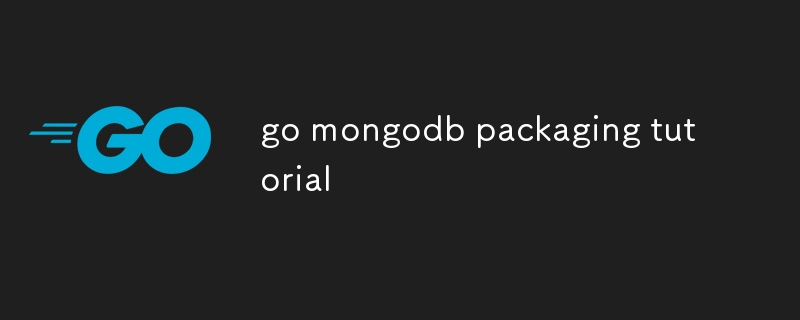Home >Backend Development >Golang >go mongodb packaging tutorial
go mongodb packaging tutorial
- DDDOriginal
- 2024-08-15 12:19:19819browse
This article provides guidance on encapsulating MongoDB operations in Go using an ORM library like mgo. It highlights the benefits of using ORM, such as a simplified API, reduced boilerplate code, and data validation. The article also includes an exa

How to encapsulate MongoDB operations in Go?
To encapsulate MongoDB operations in Go, you can use an Object-Relational Mapping (ORM) library like mgo. ORM libraries provide a higher-level abstraction over the MongoDB API, making it easier to work with MongoDB databases in Go.mgo. ORM libraries provide a higher-level abstraction over the MongoDB API, making it easier to work with MongoDB databases in Go.
What are the benefits of using an ORM like Mgo for MongoDB in Go?
Using an ORM like mgo for MongoDB in Go offers several benefits, including:
- Simplified API: ORMs provide a more user-friendly API for interacting with MongoDB, making it easier to perform common operations like querying, inserting, and updating data.
- Reduced Boilerplate Code: ORMs automatically generate much of the boilerplate code that would otherwise be required to work with MongoDB, reducing development time.
- Data Validation: ORMs can be used to enforce data validation rules, ensuring that data stored in the database is valid.
Can you provide an example of how to use a Go library to connect to and query a MongoDB database?
Here is an example of how to use the mgo
mgo for MongoDB in Go offers several benefits, including:🎜- Simplified API: ORMs provide a more user-friendly API for interacting with MongoDB, making it easier to perform common operations like querying, inserting, and updating data.
- Reduced Boilerplate Code: ORMs automatically generate much of the boilerplate code that would otherwise be required to work with MongoDB, reducing development time.
- Data Validation: ORMs can be used to enforce data validation rules, ensuring that data stored in the database is valid.
mgo library to connect to and query a MongoDB database:🎜<code class="go">package main
import (
"context"
"fmt"
"github.com/globalsign/mgo"
"github.com/globalsign/mgo/bson"
)
func main() {
// Create a new MongoDB session.
session, err := mgo.Dial("mongodb://localhost:27017")
if err != nil {
panic(err)
}
defer session.Close()
// Get a collection from the session.
collection := session.DB("test").C("users")
// Query the collection.
query := bson.M{"name": "John"}
results, err := collection.Find(query).Limit(100).All(nil)
if err != nil {
panic(err)
}
// Print the results.
for _, result := range results {
fmt.Println(result)
}
}</code>The above is the detailed content of go mongodb packaging tutorial. For more information, please follow other related articles on the PHP Chinese website!
Related articles
See more- How Can I Overlay and Manipulate Images with Specific Positions, Rotations, and Z-Indexing in Golang?
- How to Fix the 'SSL is not enabled on the server' Error in Go Postgres Connections?
- Are Go Goroutines Truly Coroutines?
- How to Solve 'Golang fatal error: concurrent map read and map write' in Go Concurrency?
- How Can We Efficiently Handle Go's Array/Slice Covariance Limitations?

